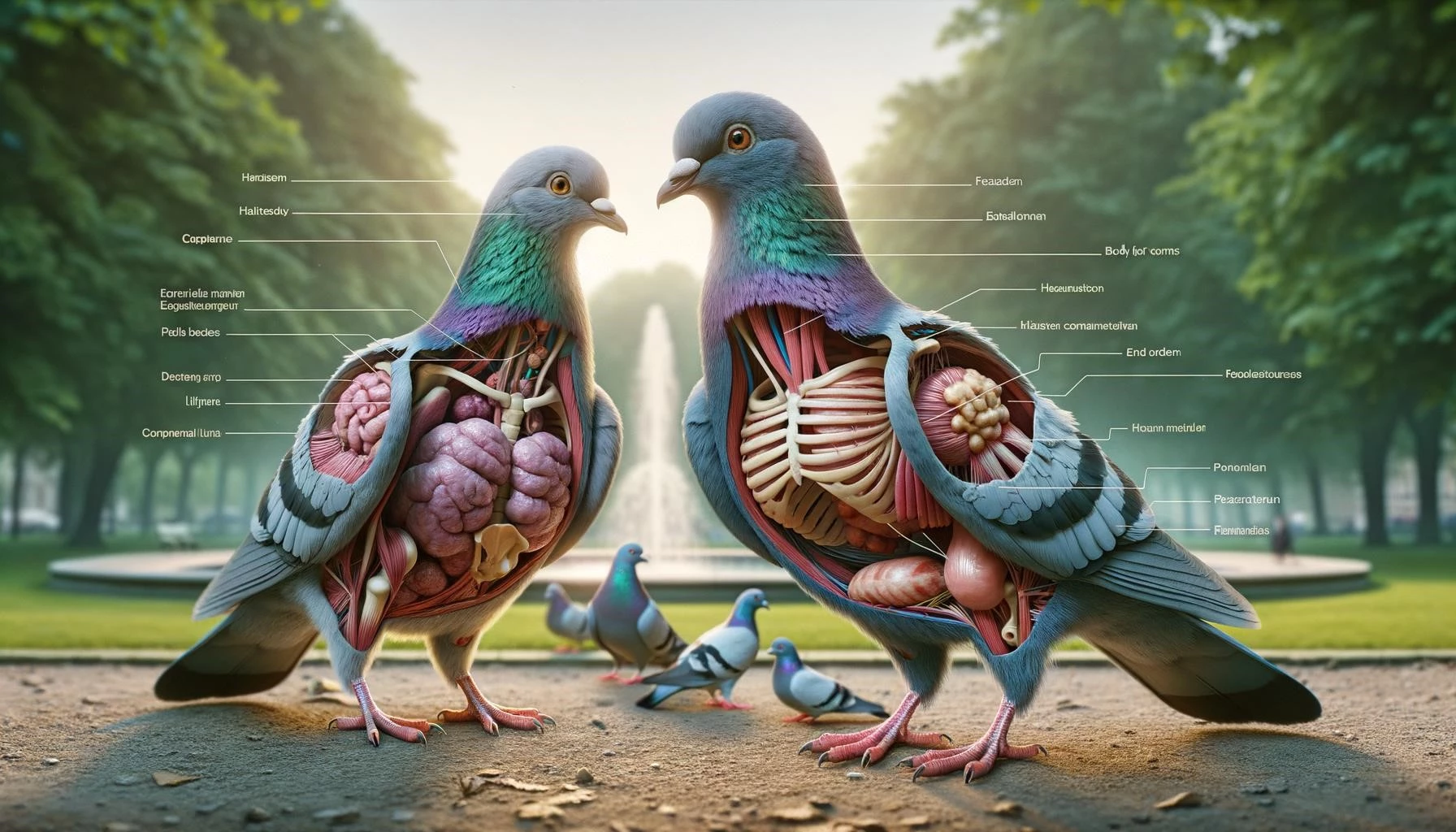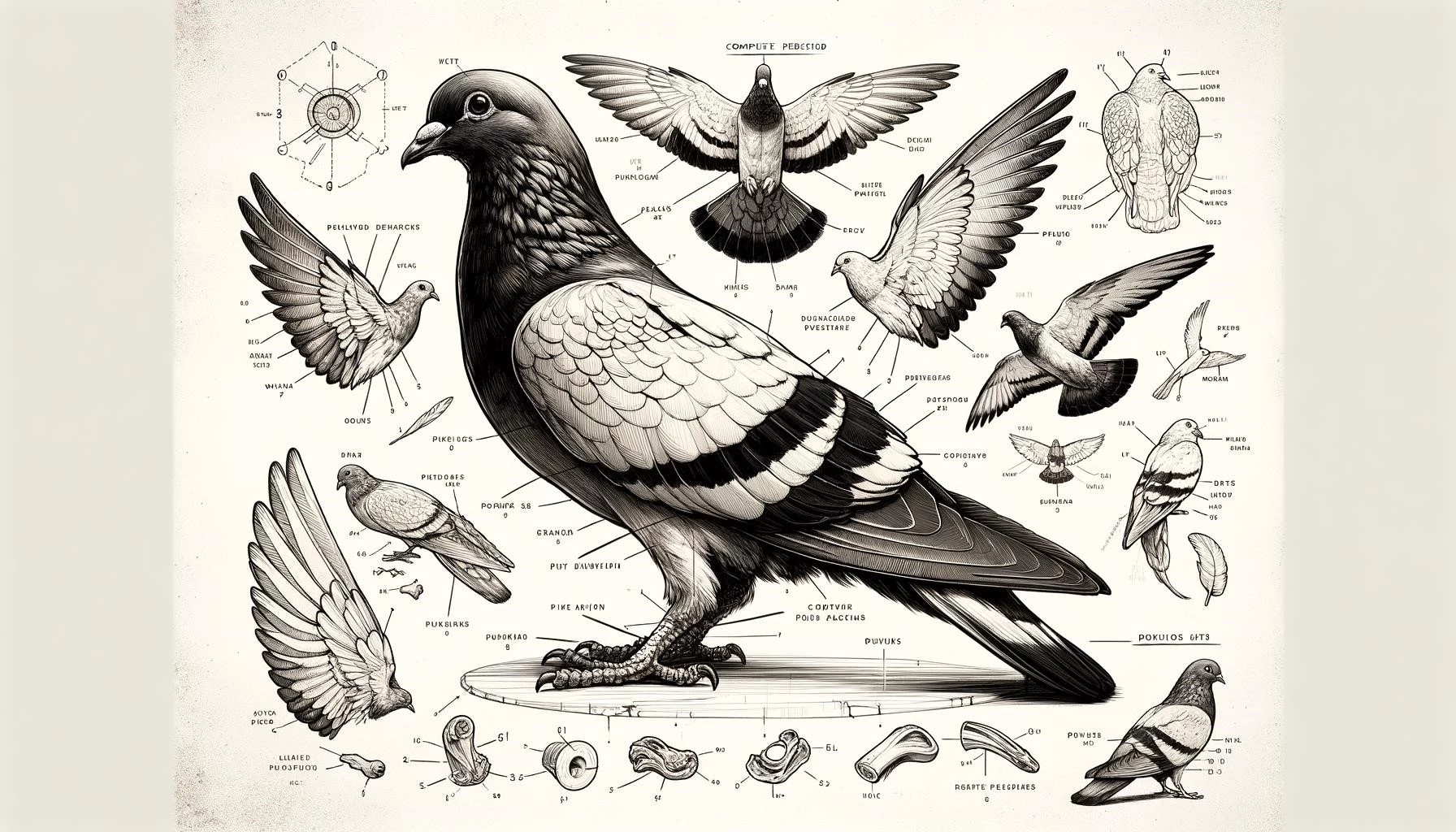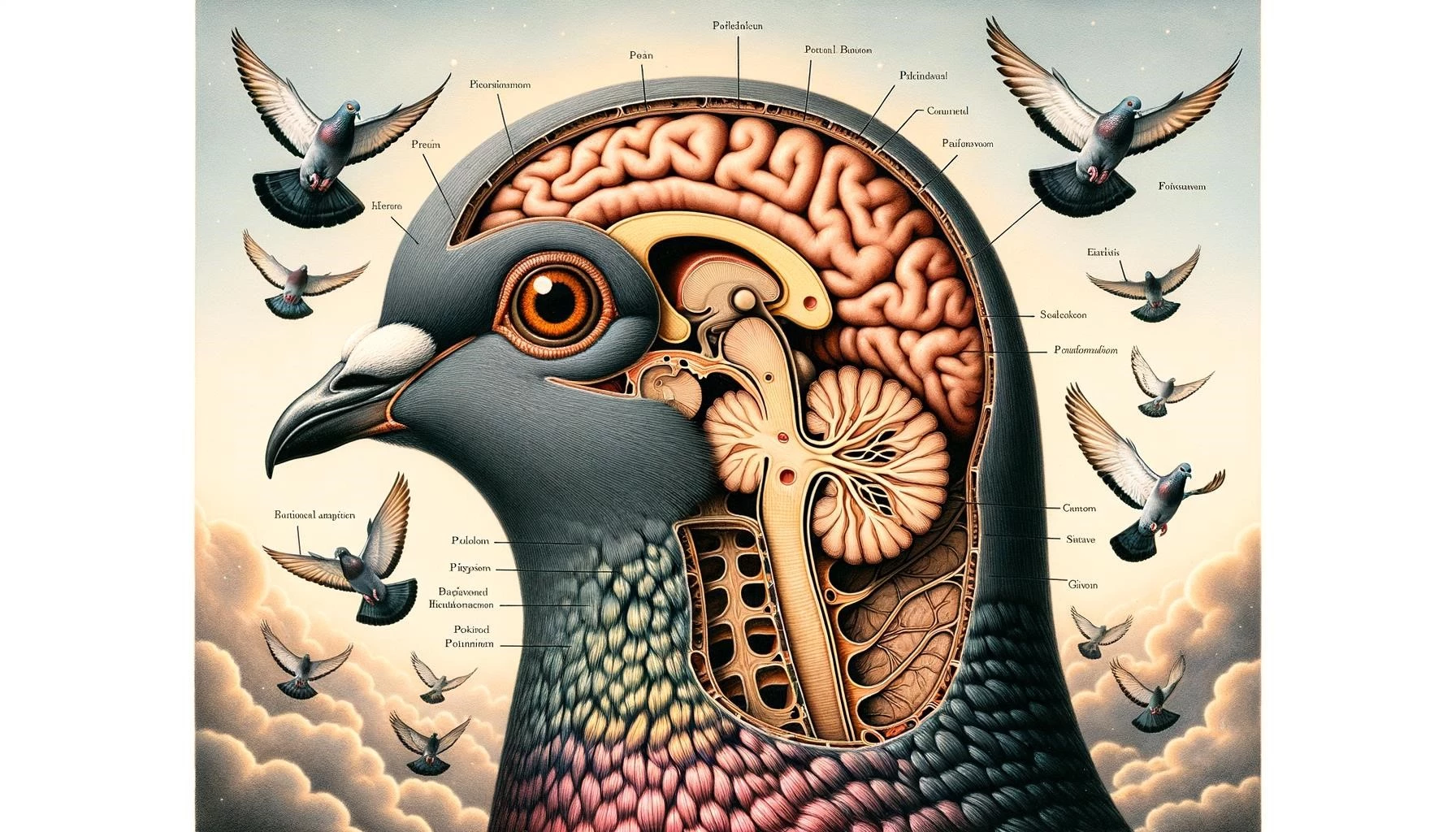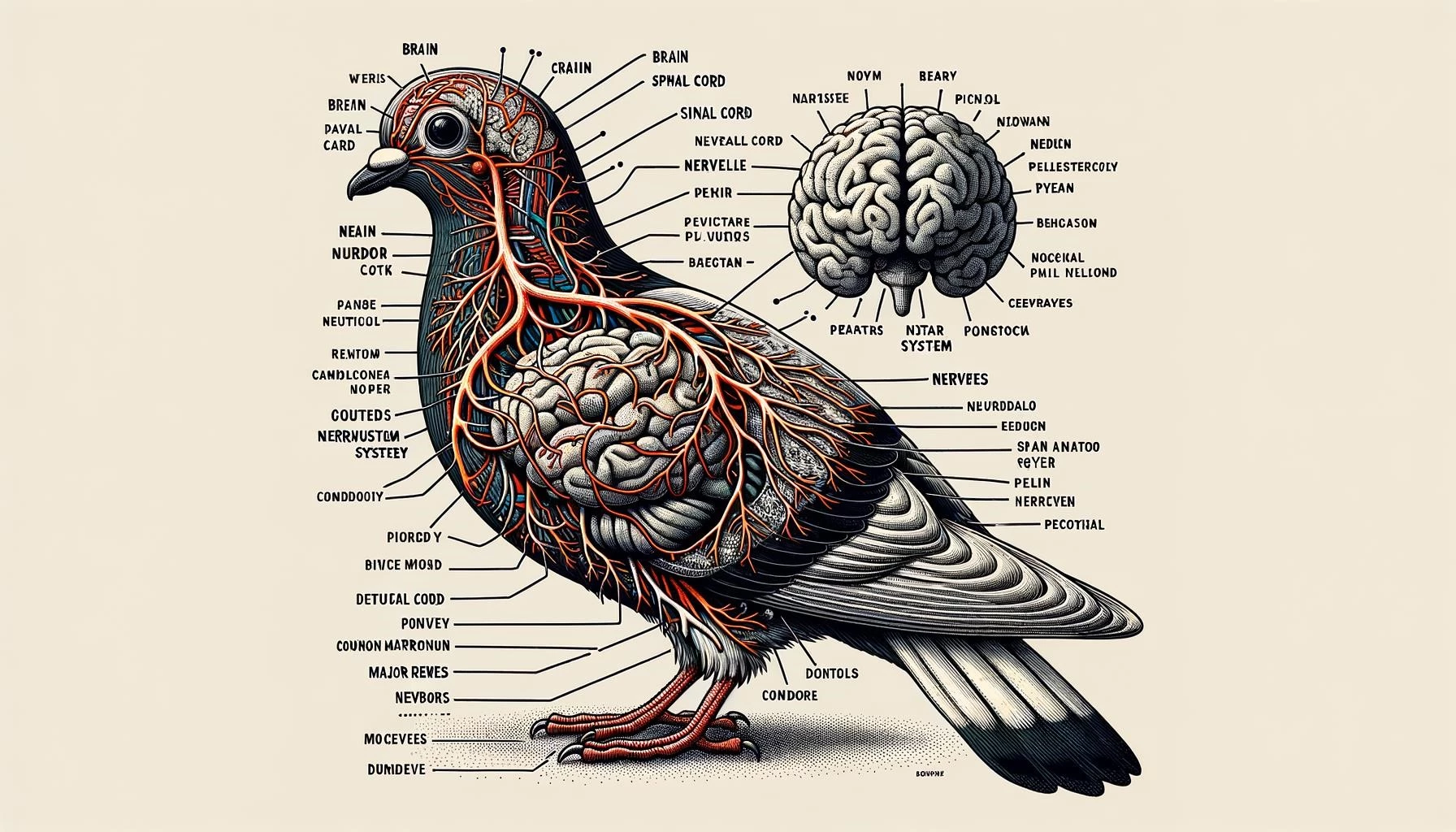Pigeons are a type of bird that belong to the family Columbidae, which consists of more than 300 species of birds. They share similar features and anatomical characteristics with other birds but also possess some unique traits. In this article, we will explore the anatomy of pigeons and compare it to that of other bird species.
Key Takeaways
- Pigeons are characterized by their compact shape, plump body, and relatively small head. They have long wings and powerful flight muscles, making them strong and swift fliers.
- Pigeons have a unique digestive system, consisting of several parts such as the mouth, esophagus, proventriculus, ventriculus, and cloaca.
- The respiratory system of pigeons includes nares externa, larynx, bronchi, syrinx, and lungs.
- Compared to mammals, birds have significant anatomical differences, including the size of their heart, which is much larger in proportion to their body weight.
- Pigeons share some anatomical similarities with other bird species, such as doves, but also have distinctive characteristics that set them apart.
Anatomy of Pigeons
Pigeons are known for their distinctive appearance, with a compact shape, plump body, and relatively small head. These features are due to their well-developed pectoral muscles. Pigeons have long wings, which are often pointed in highly migratory species or those that obtain most of their food in trees. However, some island or montane species that fly less have reduced wings.
In terms of flight, pigeons are known for being very fast birds, which makes them great messengers and racers. Pigeon racing, in particular, is a popular and lucrative sport in which racing pigeons can be quite expensive.
When it comes to their internal anatomy, pigeons have a unique digestive system. It consists of several parts, including the mouth, esophagus, proventriculus (or glandular stomach), ventriculus (or gizzard), duodenum, jejunum, ileum, rectum, and cloaca. The proventriculus is responsible for the initial digestion of food, while the gizzard helps with the mechanical breakdown of food through muscular contractions.
In terms of their respiratory system, pigeons have nares externa (nostrils), a larynx, bronchi, syrinx (vocal organ), and lungs. The syrinx is unique to birds and allows them to produce a wide range of vocalizations.
Comparison to Other Birds
Pigeons share some anatomical similarities with other bird species, particularly those belonging to the same family Columbidae, such as doves. They possess common features like thick feathers and a distinctive skin saddle (cere) between the bill and forehead. Pigeons also strut with a characteristic bobbing of the head.
However, pigeons also have some distinctive anatomical characteristics that set them apart from other bird species. Their compact shape, plump body, and small head differentiate them from birds with different body proportions. Additionally, their long wings and powerful flight muscles make them exceptional fliers.
Compared to mammals, birds, including pigeons, have significant anatomical differences. One notable difference is in the size of their heart. The size of a bird’s heart is typically about 0.2-2.4% of its body weight, which is relatively high compared to mammals. This adaptation is necessary to support the high energy demands of flight.
Conclusion
Pigeons, like other members of the Columbidae family, have unique anatomical characteristics that distinguish them from other bird species. Their compact shape, plump body, small head, and powerful flight muscles are some key features that make them exceptional fliers. Their digestive and respiratory systems are also specialized for their unique needs as birds. Understanding the anatomy of pigeons can provide valuable insights into the adaptations and capabilities of these fascinating creatures.









